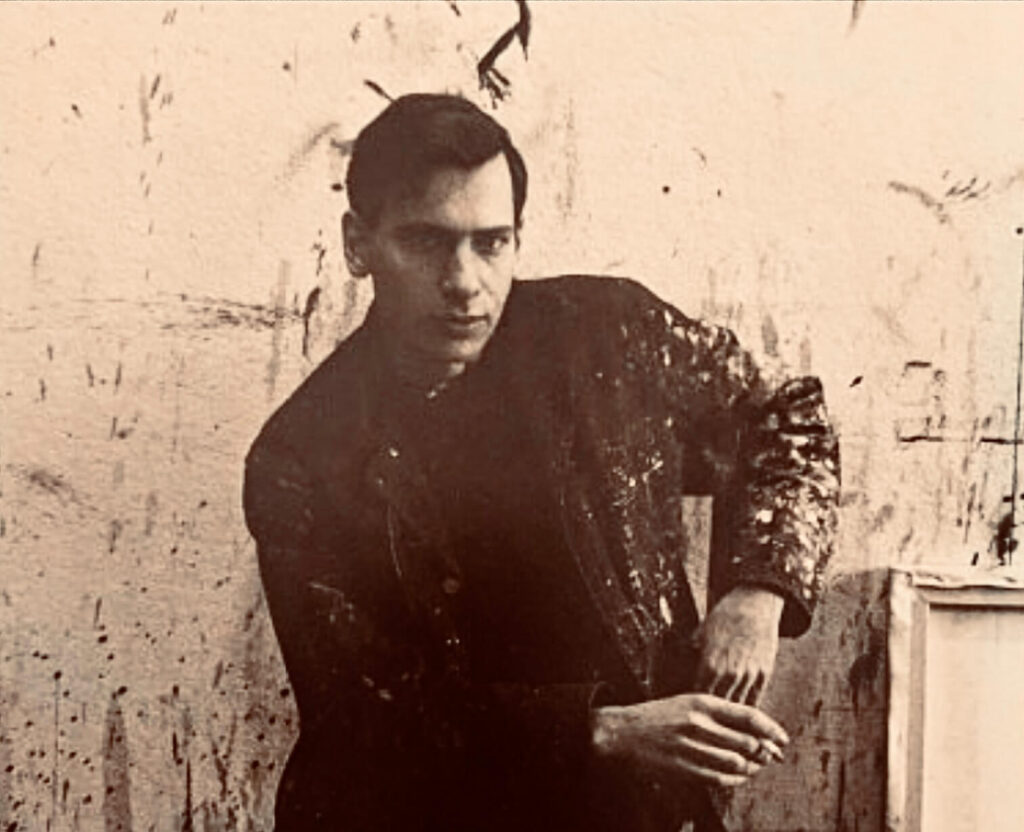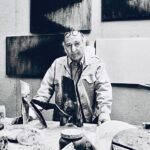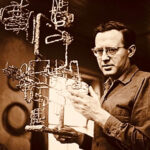Paul Brach
Paul Brach (1924-2007) was a significant figure in the American art scene, known for his contributions as a painter, educator, and curator. His work and influence extended beyond his own artistic practice, impacting the broader cultural landscape through his involvement in art education and curation. This biography explores Brach’s life, artistic development, and two of his most important artworks, illustrating his enduring legacy in modern art.

Early Life and Education
Paul Brach was born on March 13, 1924, in New York City. Growing up in the cultural hub of New York, Brach was exposed to art from an early age. His interest in art was nurtured by the city’s vibrant art scene, and he decided to pursue a career as an artist. Brach attended The New School for Social Research and the Art Students League of New York, where he studied under prominent artists such as Hans Hofmann and George Grosz.
His education was interrupted by World War II, during which he served in the United States Army Air Forces. After the war, Brach returned to his studies, enrolling at the University of Iowa, where he earned a Bachelor of Fine Arts and a Master of Fine Arts. It was during this period that Brach began to develop his distinctive style, influenced by Abstract Expressionism and the emerging trends in modern art.
Artistic Development and Early Career
In the late 1940s and early 1950s, Brach’s work was characterized by its engagement with Abstract Expressionism. His early paintings featured bold, gestural brushstrokes and dynamic compositions, reflecting the influence of artists like Jackson Pollock and Willem de Kooning. Brach was part of a generation of artists who sought to push the boundaries of abstraction, using color, form, and gesture to convey emotion and movement.
In 1954, Brach moved to California, where he became involved with the Bay Area Figurative Movement. This group of artists, which included figures like David Park and Richard Diebenkorn, sought to reintroduce figuration into abstract painting. Brach’s work during this period reflected a balance between abstraction and representation, combining gestural brushwork with recognizable forms and figures.
Move to New York and Mature Style
In the early 1960s, Brach returned to New York, where he continued to evolve as an artist. His work became more structured and geometric, characterized by an exploration of color fields and spatial relationships. This period marked the development of his mature style, which combined elements of Abstract Expressionism with a more refined, minimalist approach.
Brach’s paintings from this period often featured large, flat areas of color, intersected by lines and geometric shapes. His use of color was bold and vibrant, creating a sense of depth and movement within the composition. These works reflected his interest in the interaction between color and form, as well as his ongoing exploration of abstraction.
Important Artworks
“Homage to the Sun” (1964)
One of Paul Brach’s most significant works, “Homage to the Sun” (1964), exemplifies his mature style and his exploration of color and form. The painting features a large, circular form rendered in vibrant shades of red and orange, set against a background of deep blue. The composition is simple yet powerful, with the bold colors creating a sense of energy and warmth.
The use of the circular form in “Homage to the Sun” reflects Brach’s interest in symbolism and his exploration of the relationship between shape and color. The painting evokes the sun’s radiance and heat, capturing its intensity through the use of color. This work demonstrates Brach’s ability to create compositions that are both visually striking and emotionally resonant, using abstraction to convey a sense of awe and wonder.
“Eclipse” (1970)
Another important work in Brach’s oeuvre is “Eclipse” (1970), a painting that showcases his innovative use of color and geometric forms. The composition features overlapping circular forms in shades of black, white, and gray, creating a dynamic interplay of light and shadow. The careful arrangement of shapes and the use of contrasting colors give the painting a sense of movement and depth.
“Eclipse” reflects Brach’s interest in celestial themes and his exploration of the interplay between light and dark. The painting captures the dramatic moment of an eclipse, using abstraction to evoke the tension and mystery of the event. This work highlights Brach’s skill in creating compositions that are both aesthetically pleasing and conceptually rich, blending formal elements with deeper symbolic meaning.
Teaching and Curatorial Work
In addition to his work as a painter, Paul Brach was also a dedicated educator and curator. He taught at several institutions, including the University of California, Berkeley, and the Cooper Union in New York. His commitment to teaching and his influence on younger artists extended his impact beyond his own work, contributing to the ongoing development of modern art.
Brach’s curatorial work was also significant, particularly his role as the founding dean of the School of Visual Arts at the California Institute of the Arts (CalArts). In this position, he played a crucial role in shaping the curriculum and fostering an environment that encouraged experimentation and innovation. His efforts helped establish CalArts as a leading institution for art education, influencing generations of artists and educators.
Personal Life and Philosophy
Paul Brach’s personal life was marked by his dedication to his art and his relationships with fellow artists. He was married to painter Miriam Schapiro, a pioneering figure in the feminist art movement. Their partnership was both personal and professional, with each influencing the other’s work and career.
Brach viewed his paintings as a form of exploration and discovery, a way to engage with the world and convey his inner vision. He believed in the power of abstraction to evoke emotional and intellectual responses, and his work often reflects a deep sense of curiosity and wonder about the human experience. His philosophy of art emphasized the importance of balance and harmony, seeking to create compositions that were both visually striking and emotionally resonant.
Legacy and Influence
Paul Brach’s legacy as an artist lies in his ability to create a unique visual language that combines emotion, movement, and color. His innovative use of gestural abstraction and his dynamic compositions have left a lasting impact on the field of modern art, influencing generations of artists and viewers.
Brach’s works are included in the collections of major museums and galleries around the world, including the Museum of Modern Art in New York, the Whitney Museum of American Art, and the San Francisco Museum of Modern Art. His influence extends beyond his own paintings, as he also played a crucial role in advocating for the recognition and inclusion of abstract artists within the art world.
Conclusion
Paul Brach’s artistic journey is a testament to his creativity, resilience, and profound understanding of color and form. Through his innovative use of gestural abstraction and his dynamic compositions, he created a body of work that continues to inspire and challenge viewers. “Homage to the Sun” and “Eclipse” are just two examples of his ability to convey complex ideas and emotions through abstract forms and vibrant colors. Brach’s legacy as a master of abstract expressionism and a pioneer of modern art ensures that his work will continue to resonate with audiences for years to come.



